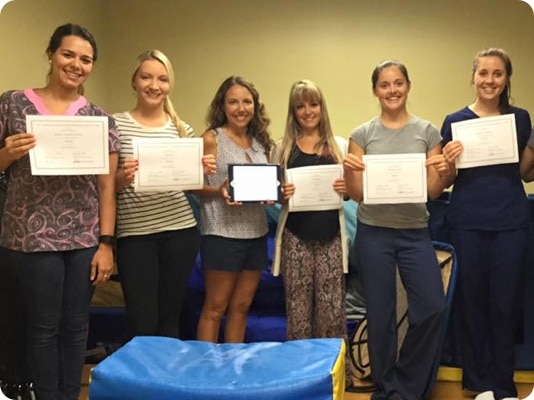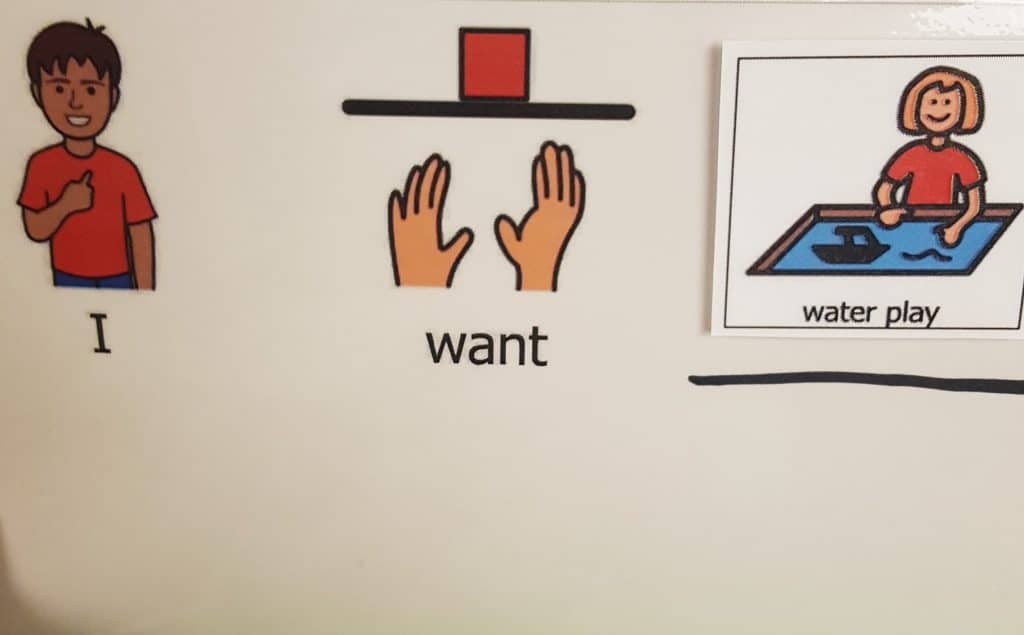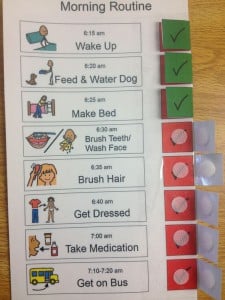
As a team at Progressive Pediatric Therapy, we are expanding our knowledge base for evaluating and treating children on the Autism Spectrum Disorder. We have been completing modules centered around treatment with the best evidence-based practice. Recently, our team earned certification in the evidence-base for Visual Supports through Autism Focused Intervention Resources & Modules (AFIRM).
Visual supports are concrete cues that are paired with, or used in place of, a verbal cue to provide the learned with information about a routine, activity, behavioral expectation, or skill demonstration (Hume et al., 2014). Visual supports can be divided into three categories: visual boundaries, visual cues, and visual schedules.

Visual boundaries involves creating natural boundaries with objects, furniture, tape on floor, or rugs to clearly designate the boundary area. The boundary will create a clear beginning and end to the visual space for the area or setting. This would be helpful in a classroom such as during circle time or for specific play areas.
Visual cues include graphic organizers, visual instructions, labels, or choice boards. This assists by giving visual representations of expected activity or outcome. For example, a choice board would be helpful for a child during snack time. They could pick between different visual cues of snack options. Visual instructions can be used for completing an activity at school.

Lastly, Visual schedules assist in providing a visual representation of steps for tasks, events,or day. These visual supports can assist children in visualizing length of task or event. For example, a child in school may have a visual schedule of school activities (morning circle, centers, lunch, story time, home).

Evidence demonstrates that visual supports are effective for preschoolers to high school age learners with ASD. Visual supports can be effective to address: social communication, behavior, play, cognitive, school readiness, academic, motor, and adaptive outcomes.
For more information visit: www.afirm.fpg.unc.edu.

AFIRM Team. (2015). Visual supports. Chapel Hill, NC: National Professional Development Center on Autism Spectrum Disorders, FPG Child Development Center, University of North Carolina. Retrieved from http://afirm.fpg.unc.edu/visual-supports
Hume, K., Wong, C., Plavnick, J., & Schultz, T. (2014). Use of visual supports with young children with autism spectrum disorders. In J. Tarbox, D. R. Dixon, P. Sturmey & J. L. Matson (Eds.), Handbook of early intervention for autism spectrum disorders (pp. 375-402) New York, NY: Springer. doi: 10.1007/978-1-4939-0401-3


0 Comments